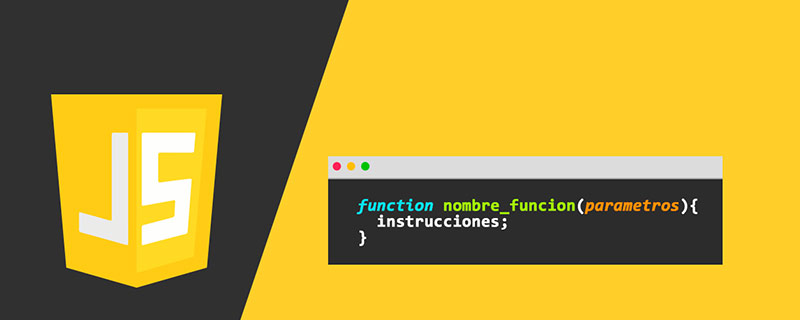What this article brings to you is about the commonly used traversal methods (code examples) of JavaScript arrays. It has certain reference value. Friends in need can refer to it. I hope it will be helpful to you.

Preface
This article mainly introduces common array traversal methods: forEach, map, filter, find, every, some, reduce, they all have one thing in common: they will not change the original array.
1. forEach: Traverse the array
var colors = ["red","blue","green"];
// ES5遍历数组方法
for(var i = 0; i <pre class="brush:php;toolbar:false">// ES6 forEach
colors.forEach(function(color){
console.log(color);//red blue green
});Let’s look at an example again: traverse the values in the array and calculate the sum
var numbers = [1,2,3,4,5]; var sum = 0; numbers.forEach(number=>sum+=number) console.log(sum)//15
2. Map: Map an array into another array
map processes each element of the array through the specified function and returns the new array after processing. Map does not change the original array.
The difference between forEach and map is that forEach has no return value.
map needs to return a value. If no return is given, it will return undefined by default
Usage scenario 1
Assume that there is a numerical array (A), and the values in the A array are doubled in the form B array
var numbers = [1,2,3];
var doubledNumbers = [];
// es5写法
for(var i = 0; i <pre class="brush:php;toolbar:false">// es6 map方法
var doubled = numbers.map(function(number){
return number * 2;
})
console.log(doubled);//[2,4,6]Usage scenario 2 Assume there is an object array (A), and store the value of a certain attribute of the object in the A array into the B array
var cars = [
{model:"Buick",price:"CHEAP"},
{model:"BMW",price:"expensive"}
];
var prices = cars.map(function(car){
return car.price;
})
console.log(prices);//["CHEAP", "expensive"]3. Filter: Find all elements that meet the specified conditions from the array
filter() detects numeric elements and returns an array of all elements that meet the conditions. filter() does not change the original array.
Usage scenario 1: Assume there is an object array (A), get the specified type of object in the array and put it into the B array
var porducts = [
{name:"cucumber",type:"vegetable"},
{name:"banana",type:"fruit"},
{name:"celery",type:"vegetable"},
{name:"orange",type:"fruit"}
];
// es5写法
var filteredProducts = [];
for(var i = 0; i <pre class="brush:php;toolbar:false">// es6 filter
var filtered2 = porducts.filter(function(product){
return product.type === "vegetable";
})
console.log(filtered2);Usage scenario 2: Assume there is An object array (A), filter out objects that do not meet the following conditions
Conditions: The quantity of vegetables is greater than 0, and the price is less than 10
var products = [
{name:"cucumber",type:"vegetable",quantity:0,price:1},
{name:"banana",type:"fruit",quantity:10,price:16},
{name:"celery",type:"vegetable",quantity:30,price:8},
{name:"orange",type:"fruit",quantity:3,price:6}
];
products = products.filter(function(product){
return product.type === "vegetable"
&& product.quantity > 0
&& product.price <p><strong>Usage scenario 3</strong>: Assume there are two arrays (A,B), based on the id value in A, filter out the data that does not match the B array</p><pre class="brush:php;toolbar:false">var post = {id:4,title:"Javascript"};
var comments = [
{postId:4,content:"Angular4"},
{postId:2,content:"Vue.js"},
{postId:3,content:"Node.js"},
{postId:4,content:"React.js"},
];
function commentsForPost(post,comments){
return comments.filter(function(comment){
return comment.postId === post.id;
})
}
console.log(commentsForPost(post,comments));//[{postId:4,content:"Angular4"},{postId:4,content:"React.js"}]4. find: Returns the first element of the array that passes the test (judged within the function) Value
Its parameter is a callback function, and all array members execute the callback function in sequence until the first member whose return value is true is found, and then returns that member. If there are no matching members, undefined is returned.
Usage scenario 1
Assume there is an object array (A), find the object that meets the conditions
var users = [
{name:"Jill"},
{name:"Alex",id:2},
{name:"Bill"},
{name:"Alex"}
];
// es5方法
var user;
for(var i = 0; i <pre class="brush:php;toolbar:false">// es6 find
user = users.find(function(user){
return user.name === "Alex";
})
console.log(user);// {name:"Alex",id:2}找到后就终止循环Usage scenario 2: Assume there is an object array (A), according to Specify the conditions of the object to find the objects in the array that meet the conditions
var posts = [
{id:3,title:"Node.js"},
{id:1,title:"React.js"}
];
var comment = {postId:1,content:"Hello World!"};
function postForComment(posts,comment){
return posts.find(function(post){
return post.id === comment.postId;
})
}
console.log(postForComment(posts,comment));//{id: 1, title: "React.js"}5. every&some
every: Whether each element in the array meets the specified conditions
some: Whether there are elements in the array that meet the specified conditions
Usage scenario 1: Calculate whether each computer operating system in the object array is available. If the operating system is greater than 16 bits, it means it is available, otherwise it is not available
//ES5方法
var computers = [
{name:"Apple",ram:16},
{name:"IBM",ram:4},
{name:"Acer",ram:32}
];
var everyComputersCanRunProgram = true;
var someComputersCanRunProgram = false;
for(var i = 0; i <pre class="brush:php;toolbar:false">//ES6 some every
var every = computers.every(function(computer){
return computer.ram > 16;
})
console.log(every);//false
var some = computers.some(function(computer){
return computer.ram > 16;
})
console.log(some);//true In a nutshell: Every: One true is true; Some: One false is false
##Usage scenario 2: Assume there is a registration page, Determine whether the length of all input content is greater than 0
function Field(value){
this.value = value;
}
Field.prototype.validate = function(){
return this.value.length > 0;
}
//ES5方法
var username = new Field("henrywu");
var telephone = new Field("18888888888");
var password = new Field("my_password");
console.log(username.validate());//true
console.log(telephone.validate());//true
console.log(password.validate());//true
//ES6 some every
var fields = [username,telephone,password];
var formIsValid = fields.every(function(field){
return field.validate();
})
console.log(formIsValid);//true
if(formIsValid){
// 注册成功
}else{
// 给用户一个友善的错误提醒
}6. reduce: combine the array into a value
reduce() method receives a method as an accumulator, in the array Each value of (from left to right) starts to be merged into one value. Usage scenario 1: Calculate the sum of all values in the array var numbers = [10,20,30];
var sum = 0;
//es5 方法
for(var i = 0; i <pre class="brush:php;toolbar:false">// es6 reduce
var sumValue = numbers.reduce(function(sum2,number2){
console.log(sum2);//0 10 30 60
return sum2 + number2;
},0);//sum2初始值为0
console.log(sumValue);Usage scenario 2: Extract an attribute of the object in the array to another In the array
var primaryColors = [
{color:"red"},
{color:"yellow"},
{color:"blue"}
];
var colors = primaryColors.reduce(function(previous,primaryColor){
previous.push(primaryColor.color);
return previous;
},[]);
console.log(colors);//["red", "yellow", "blue"]Usage scenario 3: Determine whether the brackets in the string are symmetrical
function balancedParens(string){
return !string.split("").reduce(function(previous,char){
if(previous <p class="comments-box-content"></p>The above is the detailed content of Commonly used traversal methods for javascript arrays (code examples). For more information, please follow other related articles on the PHP Chinese website!
 Vercel是什么?怎么部署Node服务?May 07, 2022 pm 09:34 PM
Vercel是什么?怎么部署Node服务?May 07, 2022 pm 09:34 PMVercel是什么?本篇文章带大家了解一下Vercel,并介绍一下在Vercel中部署 Node 服务的方法,希望对大家有所帮助!
 node.js gm是什么Jul 12, 2022 pm 06:28 PM
node.js gm是什么Jul 12, 2022 pm 06:28 PMgm是基于node.js的图片处理插件,它封装了图片处理工具GraphicsMagick(GM)和ImageMagick(IM),可使用spawn的方式调用。gm插件不是node默认安装的,需执行“npm install gm -S”进行安装才可使用。
 一文解析package.json和package-lock.jsonSep 01, 2022 pm 08:02 PM
一文解析package.json和package-lock.jsonSep 01, 2022 pm 08:02 PM本篇文章带大家详解package.json和package-lock.json文件,希望对大家有所帮助!
 怎么使用pkg将Node.js项目打包为可执行文件?Jul 26, 2022 pm 07:33 PM
怎么使用pkg将Node.js项目打包为可执行文件?Jul 26, 2022 pm 07:33 PM如何用pkg打包nodejs可执行文件?下面本篇文章给大家介绍一下使用pkg将Node.js项目打包为可执行文件的方法,希望对大家有所帮助!
 分享一个Nodejs web框架:FastifyAug 04, 2022 pm 09:23 PM
分享一个Nodejs web框架:FastifyAug 04, 2022 pm 09:23 PM本篇文章给大家分享一个Nodejs web框架:Fastify,简单介绍一下Fastify支持的特性、Fastify支持的插件以及Fastify的使用方法,希望对大家有所帮助!
 node爬取数据实例:聊聊怎么抓取小说章节May 02, 2022 am 10:00 AM
node爬取数据实例:聊聊怎么抓取小说章节May 02, 2022 am 10:00 AMnode怎么爬取数据?下面本篇文章给大家分享一个node爬虫实例,聊聊利用node抓取小说章节的方法,希望对大家有所帮助!
 手把手带你使用Node.js和adb开发一个手机备份小工具Apr 14, 2022 pm 09:06 PM
手把手带你使用Node.js和adb开发一个手机备份小工具Apr 14, 2022 pm 09:06 PM本篇文章给大家分享一个Node实战,介绍一下使用Node.js和adb怎么开发一个手机备份小工具,希望对大家有所帮助!
 图文详解node.js如何构建web服务器Aug 08, 2022 am 10:27 AM
图文详解node.js如何构建web服务器Aug 08, 2022 am 10:27 AM先介绍node.js的安装,再介绍使用node.js构建一个简单的web服务器,最后通过一个简单的示例,演示网页与服务器之间的数据交互的实现。


Hot AI Tools

Undresser.AI Undress
AI-powered app for creating realistic nude photos

AI Clothes Remover
Online AI tool for removing clothes from photos.

Undress AI Tool
Undress images for free

Clothoff.io
AI clothes remover

AI Hentai Generator
Generate AI Hentai for free.

Hot Article

Hot Tools

Dreamweaver Mac version
Visual web development tools

SAP NetWeaver Server Adapter for Eclipse
Integrate Eclipse with SAP NetWeaver application server.

Atom editor mac version download
The most popular open source editor

VSCode Windows 64-bit Download
A free and powerful IDE editor launched by Microsoft

SublimeText3 Chinese version
Chinese version, very easy to use






